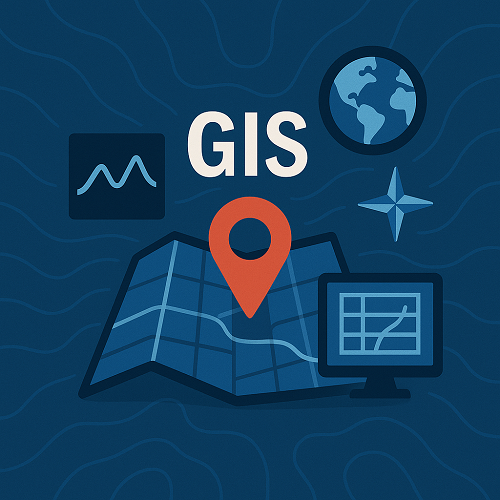TL;DR
- National GIS Day 2025 celebrates rapid advances in geospatial technology and its societal impact.
- Integration of GNSS and drone data is redefining spatial accuracy and real-time decision support.
- Esri’s November 2025 update introduces enhanced electric distribution inspection tools using AI-driven analytics (source).
- New simulation and modeling tools allow predictive spatial analysis for resilient urban planning.
- Organizations are shifting toward automated geodata pipelines that combine field sensors, imagery, and cloud platforms.
What’s New Right Now
November 19, 2025, marks National GIS Day — a global event showcasing innovation and public engagement in spatial technologies. Alongside celebrations, the industry is witnessing notable advancements. For instance, Esri’s latest release introduces electric distribution inspection capabilities powered by geospatial AI and real-time imagery (source). Moreover, cross-industry partnerships now fuse Global Navigation Satellite System (GNSS) precision with unmanned aerial vehicle (UAV) or drone mapping, creating unified platforms for accurate terrain and infrastructure data collection (source).
Another key development is the rise of advanced simulation environments supporting decision-making for climate adaptation, infrastructure maintenance, and mobility planning. These tools generate scenario-based geospatial predictions integrating satellite, IoT, and socio-economic data layers.
Why It Matters
For businesses, the convergence of GIS, GNSS, and drones delivers faster project cycles, improved data accuracy, and reduced operational costs. Utility companies can identify asset health issues before they cause outages, while cities gain predictive insights to tackle flooding, traffic congestion, or urban heat challenges.
From a technical standpoint, the new generation of GIS tools blurs boundaries between data science and spatial analysis. Cloud-hosted models, real-time APIs, and AI-driven classification workflows democratize spatial intelligence across departments, reducing dependencies on specialized GIS staff.
Deep Dive: 2025 GIS Trends and Transformations
1. GNSS-Drone Integration
The integration of GNSS accuracy with drone mobility enables centimeter-level precision for surveying and inspection. Using RTK (Real-Time Kinematic) and PPK (Post-Processing Kinematic) methods, field teams can reduce mission time while improving elevation model accuracy. This directly supports smart city models and renewable energy site mapping.
2. Geospatial AI and Predictive Analytics
AI algorithms embedded in GIS platforms analyze thousands of spatial points to predict asset failure or identify urban risks. Machine learning enhances classification of imagery, vegetation analysis, and infrastructure inspection workflows.
3. Simulation and Digital Twins
Modern GIS simulation tools create 3D digital twins of cities, supporting long-term planning. They integrate geostatistical models for water runoff, energy use, and emissions control, enabling municipalities to visualize outcomes before implementation.
| Approach | Key Benefit | Typical Use Case |
|---|---|---|
| Traditional GIS Mapping | Static visualization | Basic asset inventory |
| GNSS-Integrated GIS | High positional accuracy | Infrastructure and utility mapping |
| Drone-Based Data Capture | Rapid aerial acquisition | Environmental monitoring, construction |
| AI-Enhanced GIS | Automated insights and classification | Predictive maintenance, risk modeling |
| Digital Twin Simulation | Scenario-based forecasting | Urban planning, resilience studies |
Mini Case Study: Utility Inspection Efficiency Through Smart GIS
Problem: A regional electric utility struggled to perform manual line inspections across thousands of kilometers, causing delays and safety risks. Traditional ground surveys took months to complete.
Approach: In early 2025, the company adopted Esri’s new electric distribution inspection modules integrating drone imagery and GNSS reference data. Field teams streamed aerial imagery into cloud-hosted GIS dashboards updated in near real-time.
Measurable Outcome: Inspection cycles decreased by 60%, while anomaly detection through AI-based classification improved fault identification accuracy by 40%. The company also reduced travel emissions by minimizing redundant site visits.
Implementation Checklist
- Assess current geospatial data maturity and identify systems suitable for GNSS or drone integration.
- Adopt a cloud-ready GIS platform supporting API access and AI-based analytics.
- Develop standardized data pipelines for imagery, LiDAR, and sensor feeds.
- Train teams in RTK-GNSS workflows and drone flight data management.
- Establish KPIs around update frequency, data accuracy, and operational time saved.
- Review governance and data protection policies before large-scale data deployment.
- Iterate insights into engineering, environment, and business planning processes.
FAQs
What is the benefit of integrating GNSS with GIS?
It ensures centimeter-level spatial accuracy, which is essential for infrastructure mapping, precision agriculture, and disaster management.
How do drones enhance GIS workflows?
Drones gather high-resolution imagery quickly, enabling near real-time spatial updates and reducing reliance on manual field surveys.
Is cloud GIS secure for enterprise data?
Yes, modern cloud GIS providers employ encryption, access control, and compliance frameworks such as ISO 27001 to protect sensitive spatial data.
What role does AI play in GIS analysis?
AI automates classification, anomaly detection, and prediction tasks, turning raw spatial data into actionable intelligence.
How can small organizations start with GIS modernization?
Begin with open-source or SaaS GIS platforms, pilot small projects, and gradually integrate sensors or remote data as needs evolve.
Conclusion
As National GIS Day 2025 highlights, geospatial systems are entering an era where precision, automation, and accessibility merge. By blending GNSS, drones, and cloud analytics, organizations can turn complex spatial data into strategic foresight. To stay ahead in this evolving landscape, explore our GIS services and unlock new dimensions of operational intelligence.
